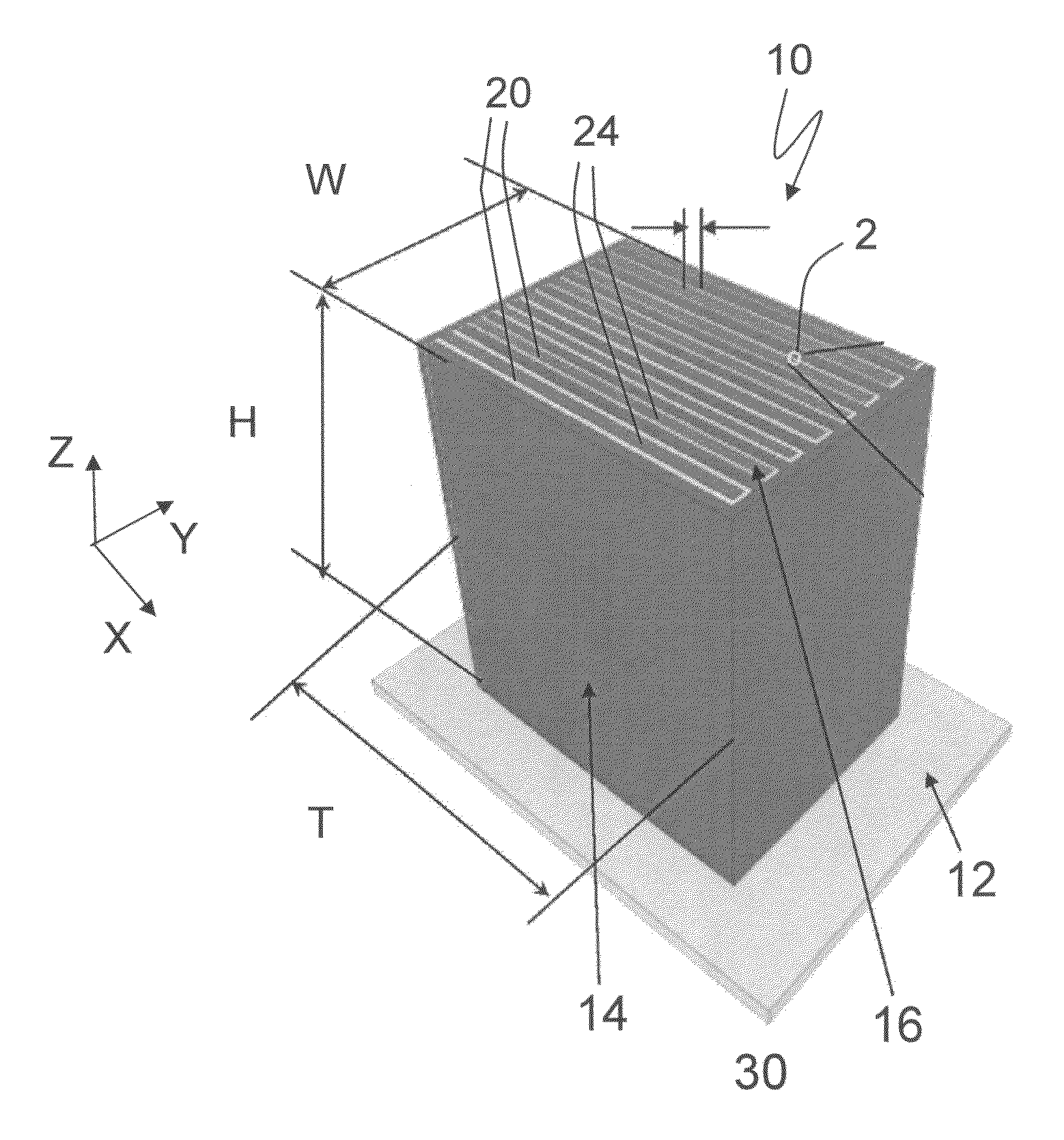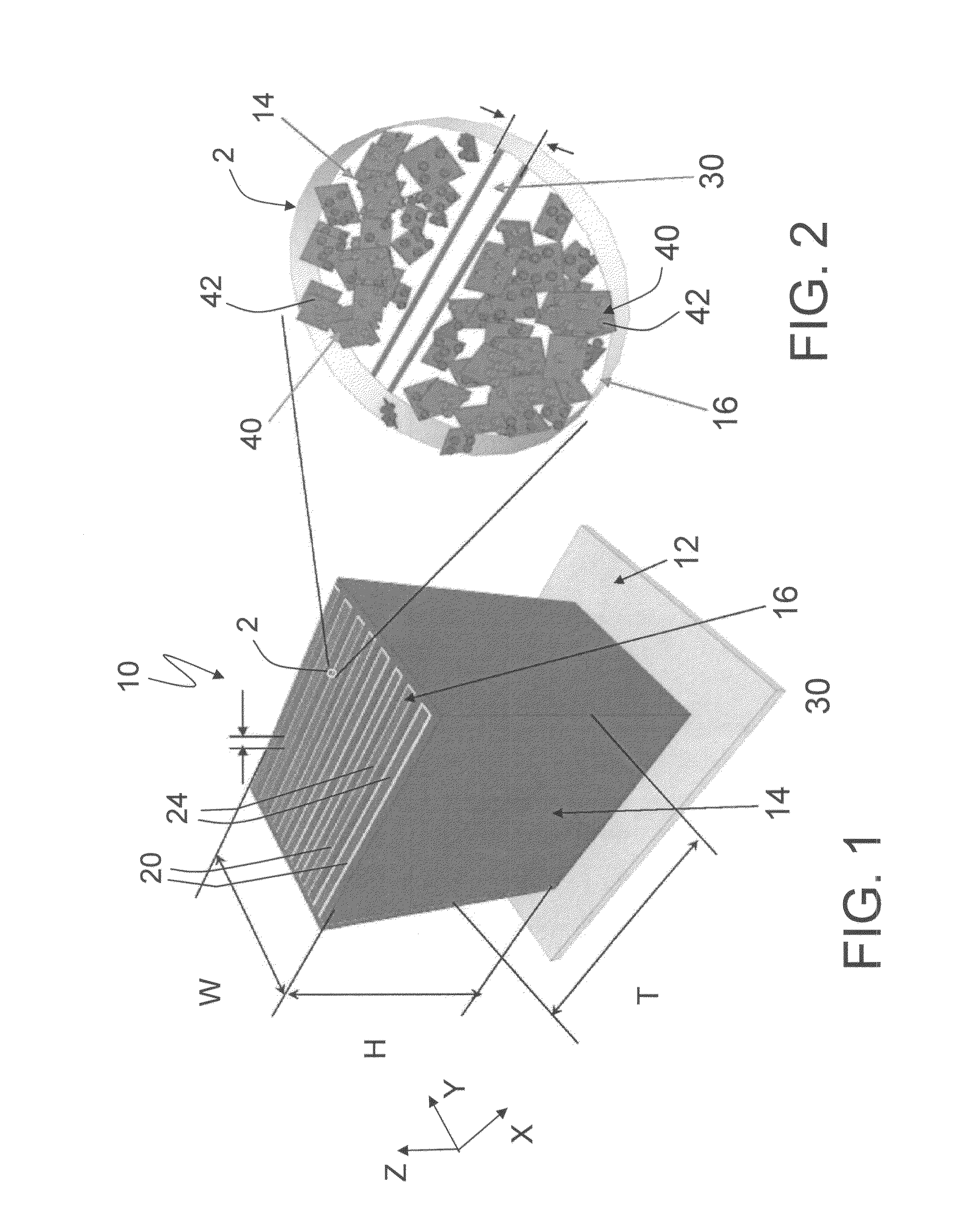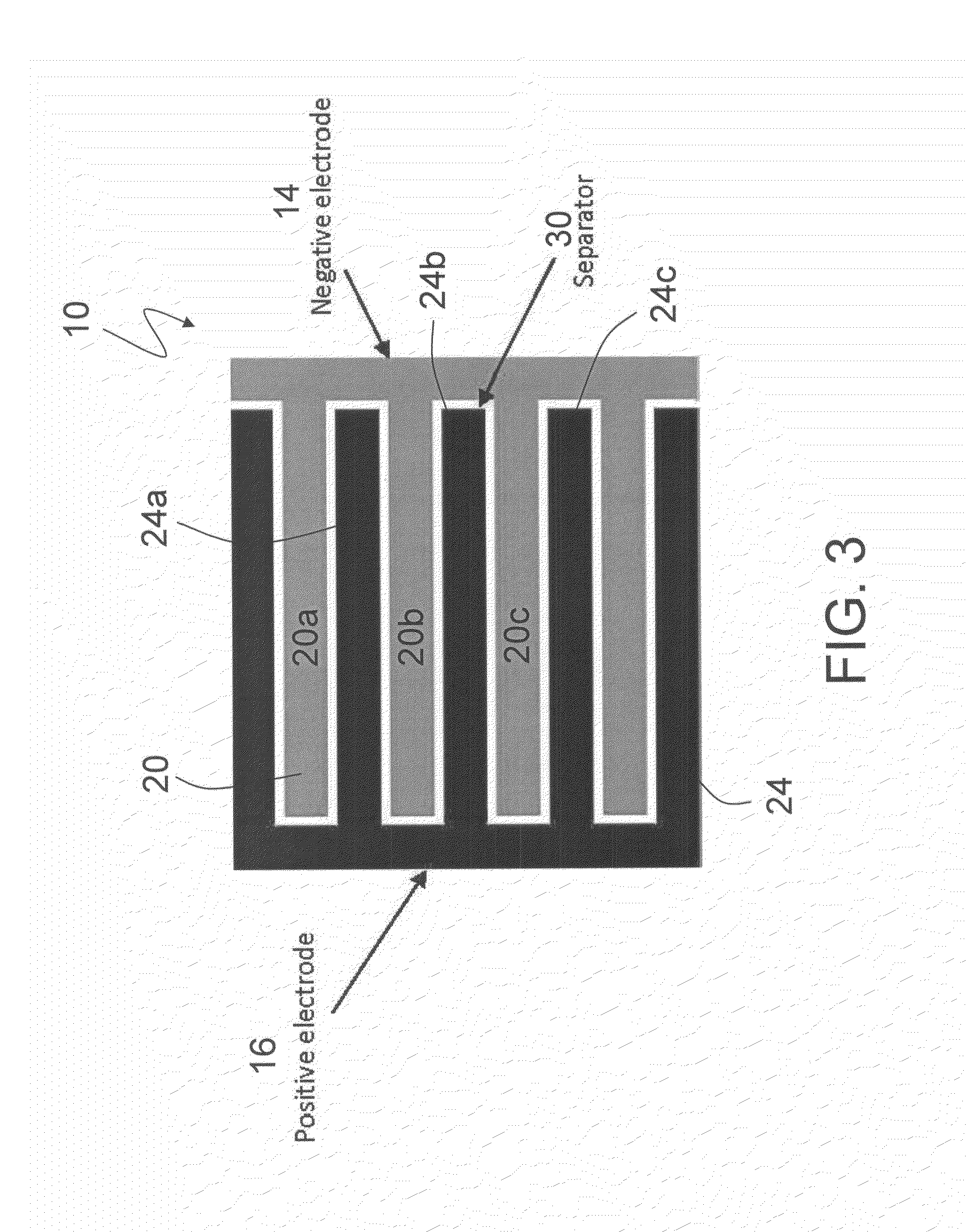Three-dimensional supercapacitors and batteries with high energy densities
a supercapacitor and energy density technology, applied in the field of energy storage, can solve the problems of short time required to recharge a li-ion battery, low power density of rechargeable batteries, and inability to meet the requirements of energy storage, etc., and achieve the effect of improving energy storag
- Summary
- Abstract
- Description
- Claims
- Application Information
AI Technical Summary
Benefits of technology
Problems solved by technology
Method used
Image
Examples
example 1
[0063]This example highlights the formulation of slurries that can be used to make electrodes of 3D SCs via multi-material micro-extrusion processing.
[0064]A key factor for successful slurry micro-extrusion (SME) is good dispersion and uniform mixing of various materials used to make electrodes. Thus, this example used slurry sedimentation enhanced by filtration to identify suitable slurry formulations for achieving good dispersion and uniform mixing. In this example, the slurry composition employed was graphene nanosheets (GNs)+10 wt % carbon black+10 wt % polytetrafluoroethylene (PTFE) in a solvent containing 90 vol. % dimethylformamide (DMF)+10 vol. % deionized water with pH=10. Here, the 10 wt % PTFE served as a binder, whereas the 10 wt % carbon black nanoparticles served the purpose of separating GNs to prevent them from restacking, thereby leading to a high utilization of the very high surface area of GNs and thus high capacitance.
[0065]A thin electrode film with uniform thic...
example 2
[0067]This theoretical example computes the energy densities of various supercapacitors with different cell voltages and specific capacitances. The computational results are summarized in Table 3. Three different energy densities are compared in this table. The first is the specific energy based on active electrode materials only, calculated using Eq. (2). The second is the specific energy of assembled SC devices, which is typically lower than that based on active electrode materials by a factor of 3 to 4. The third is the specific energy of assembled 3D SC devices, which is lower than that based on active electrode materials by a factor of 2 or less.
[0068]From Table 3 it can be seen that the subject 3D electrode architecture offers significant advantage over conventional SC designs. Even for supercapacitors with graphene nanosheets (GNs) as electrodes (i.e., specific capacitance=150 F / g for both negative and positive electrodes), the specific energy of assembled 3D SCs is 130 Wh / kg...
PUM
| Property | Measurement | Unit |
|---|---|---|
| Thickness | aaaaa | aaaaa |
| Thickness | aaaaa | aaaaa |
| Thickness | aaaaa | aaaaa |
Abstract
Description
Claims
Application Information
 Login to View More
Login to View More - R&D
- Intellectual Property
- Life Sciences
- Materials
- Tech Scout
- Unparalleled Data Quality
- Higher Quality Content
- 60% Fewer Hallucinations
Browse by: Latest US Patents, China's latest patents, Technical Efficacy Thesaurus, Application Domain, Technology Topic, Popular Technical Reports.
© 2025 PatSnap. All rights reserved.Legal|Privacy policy|Modern Slavery Act Transparency Statement|Sitemap|About US| Contact US: help@patsnap.com



